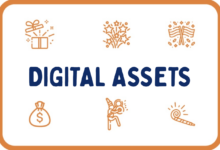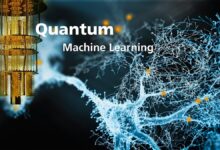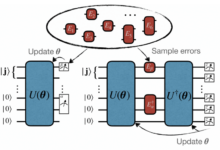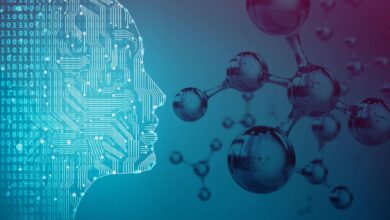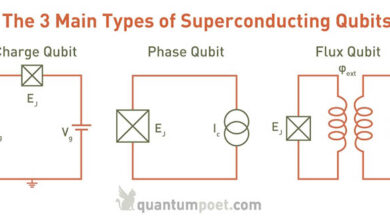AI in Education Transforming Learning
AI in education is rapidly reshaping how we learn and teach. This transformative technology offers personalized learning experiences, automated assessment, and innovative tools, promising to revolutionize education’s accessibility and effectiveness. From adaptive learning platforms that cater to individual student needs to AI-powered tools that streamline administrative tasks for educators, the implications are far-reaching and profound. This exploration delves into the multifaceted impact of AI across all levels of education.
We will examine how AI personalizes learning pathways, automates grading, generates diverse learning resources, and supports educators in their roles. Furthermore, we will address crucial ethical considerations, including bias mitigation and equitable access, to ensure AI’s responsible integration into educational systems. The future of education is intertwined with AI’s potential, and understanding its applications and limitations is crucial for navigating this evolving landscape.
AI-Powered Personalized Learning

Source: elearningindustry.com
AI is rapidly transforming education, and one of its most promising applications is personalized learning. By leveraging the power of artificial intelligence, educational platforms can adapt to individual student needs, creating more engaging and effective learning experiences. This allows for a more efficient and tailored approach to education, ultimately leading to improved learning outcomes.
Methods of AI-Driven Personalized Learning Platforms
Several methods enable AI-driven personalized learning platforms to cater to individual student needs. These platforms utilize sophisticated algorithms to analyze student performance, identify learning gaps, and adjust the learning path accordingly. This dynamic approach contrasts sharply with traditional, one-size-fits-all methods. Key methods include adaptive learning software, intelligent tutoring systems, and personalized content recommendation engines. Adaptive learning software adjusts the difficulty and content based on student performance in real-time.
Intelligent tutoring systems provide personalized feedback and guidance, simulating a one-on-one tutoring experience. Personalized content recommendation engines suggest relevant learning materials based on student interests and learning styles.
Advantages and Disadvantages of Adaptive Learning Software
Adaptive learning software offers several advantages over traditional methods. It provides individualized learning paths, caters to different learning paces, and offers immediate feedback, leading to improved comprehension and knowledge retention. However, it also presents challenges. The initial cost of implementing such systems can be high, and the effectiveness of the software depends heavily on the quality of the underlying algorithms and data.
Furthermore, over-reliance on technology might reduce opportunities for social interaction and collaborative learning crucial for holistic development. Finally, the potential for algorithmic bias needs careful consideration and mitigation.
Tailoring Learning Paths Based on Individual Student Strengths and Weaknesses, AI in education
AI algorithms analyze student performance data, including test scores, assignments, and even engagement metrics like time spent on specific topics. This data allows the system to identify areas where a student excels and areas needing improvement. For instance, if a student consistently struggles with algebra problems, the AI can adjust the learning path to provide more practice exercises, supplementary materials, or different teaching methods tailored to their specific learning style.
Conversely, if a student demonstrates mastery in a particular area, the system can accelerate their learning by introducing more challenging concepts or advanced topics. This dynamic adjustment ensures that students are constantly challenged but not overwhelmed, optimizing their learning experience.
Comparison of AI-Powered Learning Platforms
| Platform | Key Features | Target Audience | Strengths |
|---|---|---|---|
| Khan Academy | Personalized learning paths, video lessons, practice exercises, progress tracking | K-12 students, self-learners | Extensive content library, free access |
| Duolingo | Gamified language learning, adaptive exercises, personalized feedback | Language learners of all levels | Engaging and motivating, effective for vocabulary and grammar acquisition |
| DreamBox Learning | Adaptive math instruction, personalized learning paths, real-time feedback | K-8 students, focusing on mathematics | Strong focus on mathematical concepts, detailed progress reports |
AI in Assessment and Feedback: AI In Education
AI is rapidly transforming education, and its impact on assessment and feedback is particularly significant. The automation of grading and the provision of personalized feedback offer opportunities to enhance efficiency and improve learning outcomes. This section explores the multifaceted role of AI in these crucial aspects of the educational process.AI’s ability to automate the grading of objective assessments, such as multiple-choice tests and quizzes, significantly reduces the workload for educators.
This frees up valuable time for teachers to focus on more demanding tasks, such as providing personalized instruction and engaging with students.
Automated Grading of Objective Assessments
AI algorithms can accurately and efficiently grade objective assessments. These algorithms compare student responses to pre-defined answer keys, providing immediate feedback on correctness. This automation not only saves time but also minimizes human error, ensuring consistent and fair grading across all assessments. For example, a system could be designed to automatically grade a multiple-choice exam, instantly providing students with their scores and identifying areas where they struggled.
This immediate feedback allows students to quickly address misconceptions and reinforces learning. Furthermore, the data collected from automated grading can be analyzed to identify areas where the entire class needs further instruction.
Personalized Feedback on Student Work
Beyond objective assessments, AI can analyze student work in more subjective areas, such as essays and coding assignments, to provide personalized feedback. Natural Language Processing (NLP) techniques allow AI systems to understand the nuances of written language, identifying grammatical errors, stylistic issues, and logical flaws. Similarly, AI can assess code for functionality, efficiency, and adherence to best practices.
This detailed feedback pinpoints specific areas for improvement, guiding students toward better understanding and higher-quality work. For instance, an AI system could analyze a student’s essay, highlighting areas where clarity could be improved, suggesting stronger word choices, and providing explanations of grammatical errors. This targeted feedback is more effective than generic comments, fostering deeper learning.
Comparison of AI-Powered and Human Essay Scoring
AI-powered essay scoring systems offer speed and consistency, but they don’t fully replicate the nuanced understanding and contextual awareness of a human grader. While AI can effectively identify grammatical errors and structural issues, it may struggle with evaluating the originality, creativity, and overall argumentative strength of an essay in the same way a human can. Human graders bring in their experience and subject matter expertise to interpret the student’s writing within a broader context, whereas AI primarily focuses on the technical aspects of the writing.
Therefore, a blended approach, utilizing AI for initial feedback and human graders for final evaluation and nuanced assessment, may be the most effective strategy.
AI-Powered Feedback System for Mathematics
A system for providing timely and constructive feedback in mathematics could utilize AI to analyze student solutions to problems. The system would accept student-submitted solutions, either handwritten (using Optical Character Recognition or OCR) or typed. The AI would then compare the student’s work against a model solution, identifying both correct and incorrect steps. It would provide feedback not only on the final answer but also on the process followed, highlighting errors in reasoning or calculation.
For example, if a student makes an algebraic error, the system could identify the specific step where the error occurred and provide a detailed explanation of the correct procedure. Furthermore, the system could offer hints and suggestions to guide the student toward the correct solution, fostering independent problem-solving skills. The system could also adapt to the student’s individual learning style and pace, providing more or less support as needed.
This would enable students to learn from their mistakes effectively and develop a deeper understanding of mathematical concepts.
AI-Driven Educational Tools and Resources
AI is rapidly transforming the educational landscape, offering innovative tools and resources to enhance the learning experience. These tools leverage the power of artificial intelligence to create personalized, engaging, and effective learning environments for students of all ages and abilities. The development and application of AI in education is continually evolving, presenting both exciting opportunities and important ethical considerations.AI-powered tools are revolutionizing the creation of interactive learning materials, moving beyond static textbooks and worksheets to dynamic, adaptive experiences.
This shift allows for more personalized learning pathways tailored to individual student needs and learning styles.
AI-Powered Tools for Creating Interactive Learning Materials
Several platforms utilize AI to generate interactive learning content. For instance, some tools can automatically create branching scenarios in which a student’s choices influence the narrative and learning path. Other tools use AI to adapt the difficulty of exercises based on a student’s performance, ensuring they are consistently challenged but not overwhelmed. This adaptive learning is a key benefit of AI in education, providing personalized support and preventing students from becoming frustrated or disengaged.
Imagine a history lesson where a student’s choices in a virtual historical simulation affect the outcome of a battle – leading to different explanations and follow-up questions based on their decisions. This level of engagement and personalization is difficult to achieve with traditional methods.
Generating Diverse Learning Resources with AI
AI algorithms can generate a wide range of learning resources, including quizzes, flashcards, and practice problems, significantly reducing the time and effort required by educators. For example, an AI system can create multiple-choice quizzes with varying difficulty levels based on a given set of learning objectives. Similarly, AI can generate flashcards with images and definitions tailored to specific vocabulary lists or concepts.
The ability to quickly generate diverse learning resources allows educators to focus more on individual student needs and less on administrative tasks. This increased efficiency is crucial in today’s demanding educational environments. Furthermore, AI can personalize these resources based on student performance data, creating a truly adaptive learning experience.
Ethical Considerations in AI-Generated Educational Content
The use of AI in generating educational content raises several ethical concerns. Bias in algorithms, for example, can perpetuate existing inequalities if the training data used to develop the AI reflects societal biases. This could lead to unfair or inaccurate assessments of student abilities, particularly for students from underrepresented groups. Another concern is the potential for AI-generated content to lack creativity and critical thinking skills development.
Over-reliance on AI-generated materials could hinder the development of these essential skills in students. Ensuring transparency in the development and use of AI-generated content is also crucial to build trust and maintain accountability. Regular audits and evaluations of AI systems are necessary to mitigate these risks and promote fairness and equity in education.
Examples of AI Educational Tools by Subject and Grade Level
The following list provides examples of AI-powered educational tools categorized by subject area and grade level. This is not an exhaustive list, but it showcases the breadth of AI applications in education.
- Elementary School (Grades K-5):
- Math: Khan Academy (adaptive learning platform), DreamBox Learning (personalized math instruction)
- Reading: Lexia Learning (personalized reading instruction), Reading Eggs (phonics and reading games)
- Science: Mystery Science (engaging science lessons with interactive elements)
- Middle School (Grades 6-8):
- Math: IXL (practice problems and assessments), Wolfram Alpha (computational knowledge engine)
- Language Arts: Grammarly (grammar and writing assistance), Quill.org (grammar and writing practice)
- Science: PhET Interactive Simulations (interactive science simulations)
- High School (Grades 9-12):
- Math: Photomath (step-by-step math problem solving), Desmos (graphing calculator and interactive activities)
- Science: Labster (virtual lab simulations), Google Earth (geographical exploration and analysis)
- Social Studies: Historypin (interactive historical maps and images)
The Impact of AI on Educators
The integration of artificial intelligence (AI) is poised to significantly reshape the role of educators, impacting not only their daily tasks but also their professional development and the overall dynamics of the classroom. AI offers the potential to alleviate administrative burdens, allowing teachers to focus more effectively on student interaction and personalized instruction. This shift necessitates a reevaluation of educator skills and a proactive approach to embracing the transformative potential of AI in education.AI can assist educators in managing administrative tasks and freeing up time for teaching by automating various processes.
This includes tasks such as grading objective assessments, scheduling, communication with parents, and managing student records. For instance, AI-powered grading systems can automatically evaluate multiple-choice tests and short answer questions, freeing up valuable teacher time that can be redirected to providing personalized feedback on more complex assignments or engaging in one-on-one instruction with students. The automation of administrative tasks ultimately leads to increased teacher efficiency and allows for a greater focus on the core aspects of teaching.
AI-Assisted Administrative Task Management
AI tools can significantly reduce the time educators spend on administrative tasks. Automated systems can handle grading of objective assessments, freeing up time for more engaging activities such as lesson planning, individualized student support, and professional development. Imagine a teacher spending an hour grading multiple-choice tests; with AI, this time could be spent collaborating with colleagues, preparing engaging lesson plans, or providing personalized feedback to students.
This increase in efficiency allows educators to focus more directly on student needs and educational outcomes. Furthermore, AI-powered communication tools can streamline parent-teacher communication, sending automated updates on student progress and facilitating quicker responses to inquiries.
Essential Skills for Educators in the Age of AI
The effective integration of AI tools into teaching practices requires educators to develop a new set of skills. These include digital literacy, the ability to critically evaluate AI-generated content, data analysis skills to interpret student performance data generated by AI systems, and the capacity to adapt teaching methodologies to complement AI functionalities. For example, teachers need to understand how to interpret data from AI-powered learning platforms to identify students who require additional support and tailor their instruction accordingly.
Furthermore, the ability to effectively utilize AI tools while maintaining a human-centered approach to teaching is crucial.
The Evolving Role of Teachers in the Classroom
The integration of AI is not intended to replace teachers but rather to enhance their capabilities. AI can automate routine tasks, allowing teachers to take on more complex roles such as mentors, facilitators, and personalized learning guides. The teacher’s role will shift from primarily delivering information to fostering critical thinking, creativity, and problem-solving skills. Teachers will become facilitators of learning, guiding students in navigating AI-powered resources and developing their digital literacy skills.
This shift necessitates a focus on developing higher-order thinking skills in students, allowing them to effectively utilize AI tools for learning and problem-solving. For example, teachers might guide students in using AI to research complex topics, evaluate the reliability of information, and synthesize findings into well-reasoned arguments.
AI in Supporting Educator Professional Development
AI can significantly enhance professional development opportunities for educators. Personalized learning platforms can provide customized professional development recommendations based on individual teacher needs and areas for improvement. AI-powered tools can also facilitate peer learning and collaboration by connecting educators with similar interests and challenges. For example, an AI system could analyze a teacher’s performance data and suggest relevant professional development courses or workshops to address identified weaknesses.
This targeted approach ensures that professional development resources are effectively utilized, leading to improved teaching practices and student outcomes. Furthermore, AI can provide educators with access to a vast library of resources and best practices from around the world, fostering continuous learning and improvement.
Accessibility and Equity in AI-Enhanced Education
The integration of artificial intelligence (AI) in education holds immense potential to personalize learning and improve outcomes for all students. However, realizing this potential requires careful consideration of accessibility and equity to ensure that AI-powered tools benefit all learners, regardless of their background, abilities, or location. Failure to address these issues risks exacerbating existing inequalities and creating new digital divides.Potential challenges in ensuring equitable access to AI-powered educational tools for all students are numerous and multifaceted.
Challenges to Equitable Access in AI-Enhanced Education
Unequal access to technology, including reliable internet connectivity and suitable devices, remains a significant barrier. This digital divide disproportionately affects students from low-income families and rural communities, limiting their ability to participate in AI-powered learning environments. Furthermore, the design and implementation of AI systems often lack consideration for diverse learning styles and needs, potentially excluding students with disabilities or those from linguistically diverse backgrounds.
Finally, the lack of teacher training and support in utilizing AI tools effectively can further hinder equitable access, as educators may not be equipped to leverage these technologies to meet the diverse needs of their students.
Mitigating Bias in AI Algorithms Used in Education
AI algorithms are trained on data, and if that data reflects existing societal biases, the algorithms will perpetuate and even amplify those biases. For example, an AI system trained primarily on data from high-performing students might unfairly disadvantage students from underrepresented groups. Strategies for mitigating bias include carefully curating training datasets to ensure representation from diverse populations, employing techniques to detect and correct biases in algorithms, and using explainable AI (XAI) to understand how AI systems make decisions and identify potential sources of bias.
Regular audits and evaluations of AI systems are also crucial to ensure fairness and equity. Transparency in the development and deployment of these systems is paramount.
AI’s Role in Personalized Support for Students with Disabilities
AI can play a transformative role in providing personalized support for students with disabilities. AI-powered tools can offer customized learning experiences tailored to individual needs, such as assistive technologies for students with visual or auditory impairments, personalized feedback mechanisms for students with learning disabilities, and adaptive assessments that adjust difficulty levels based on student performance. AI-driven translation tools can also facilitate access for students with language barriers.
The development and deployment of such tools requires collaboration between educators, AI developers, and disability advocates to ensure they are effective, accessible, and truly meet the needs of students with diverse disabilities.
Visual Representation of AI-Enhanced Accessibility in Education
The illustration depicts a diverse group of students interacting with a virtual learning environment. One student uses voice-to-text software to participate in a class discussion, while another uses screen-reading technology to access course materials. A student with a learning disability receives personalized feedback from an AI tutor, and a student who is visually impaired interacts with a 3D model using haptic feedback.
The background shows a diverse range of settings, including a classroom, a home, and a community center, highlighting the potential of AI to provide equitable access to education regardless of location. The overall image is vibrant and inclusive, emphasizing the potential of AI to break down barriers and create a more equitable learning environment for all.
AI and the Future of Education
The integration of artificial intelligence (AI) in education is rapidly evolving, promising a transformative shift in how we teach and learn. Over the next decade, we can expect AI to move beyond its current supplementary role and become a more deeply embedded component of the educational landscape, impacting everything from curriculum design to student assessment. This section explores predictions for the future role of AI in education, the potential impact on educational institutions, and different scenarios depending on the level of AI adoption.
Predictions for AI in Education (2024-2034)
AI’s influence on education over the next 5-10 years will be substantial. We can anticipate a significant increase in personalized learning platforms, driven by AI’s ability to analyze individual student data and tailor educational content accordingly. AI-powered tutoring systems will become more sophisticated, providing targeted support and feedback to students struggling with specific concepts. Furthermore, the administrative burden on educators will likely decrease as AI takes on tasks like grading, scheduling, and providing personalized recommendations for resources.
For example, platforms already exist that can automatically assess short-answer questions and provide feedback, freeing up teachers’ time for more interactive instruction. We might also see a rise in AI-driven tools that help educators create more engaging and effective learning materials, incorporating elements of gamification and adaptive learning pathways.
Impact of AI on Educational Institution Structure and Design
The widespread adoption of AI will likely necessitate changes to the physical and organizational structure of educational institutions. Traditional classroom settings might be augmented or even replaced by hybrid learning models, blending online and in-person instruction. Learning spaces could be redesigned to accommodate collaborative learning activities supported by AI tools, emphasizing project-based learning and peer-to-peer interaction. The role of educators will also evolve, shifting from primarily delivering information to facilitating learning and providing personalized mentorship.
Institutions might invest more heavily in professional development programs for educators to equip them with the skills necessary to effectively integrate AI into their teaching practices. For instance, schools could adopt a “learning coach” model, where teachers focus on guiding students through personalized learning paths created by AI systems.
Comparative Scenarios: Education with and without Widespread AI Adoption
A future with widespread AI adoption in education presents a scenario where personalized learning is the norm, with students receiving tailored instruction and support based on their individual needs and learning styles. Learning becomes more efficient and engaging, leading to improved learning outcomes and increased student satisfaction. Educators are freed from repetitive tasks, allowing them to focus on higher-order teaching activities like mentoring and fostering critical thinking.
Conversely, a future without widespread AI adoption would likely see a continuation of traditional teaching methods, potentially widening the achievement gap and leaving students with diverse learning needs underserved. The pace of educational innovation would be slower, and the potential for personalized learning at scale would remain largely unrealized. This could result in a less equitable and efficient educational system overall.
A Hypothetical Responsible and Ethical AI-Integrated Educational System
An ideal AI-integrated educational system prioritizes ethical considerations and data privacy. Transparency in how AI systems function is paramount; students and educators should understand how data is collected, used, and protected. Bias detection and mitigation strategies must be implemented to ensure fairness and equity in AI-driven assessments and recommendations. Human oversight remains crucial, with educators playing a vital role in guiding the implementation and use of AI tools.
This system would incorporate robust safeguards against misuse, including mechanisms for human review and intervention when necessary. Data security and privacy protocols would be stringent, complying with all relevant regulations and ethical guidelines. Furthermore, the system would be designed to foster critical thinking skills, teaching students to evaluate the information they receive and to understand the limitations of AI technologies.
This would involve explicit instruction on AI literacy and responsible technology use.
Final Conclusion
The integration of AI in education presents both immense opportunities and significant challenges. While AI-powered tools can personalize learning, automate tasks, and enhance accessibility, careful consideration must be given to ethical implications, bias mitigation, and equitable access. The future of education hinges on responsible AI implementation, fostering a collaborative environment where educators and technology work in harmony to empower learners of all backgrounds and abilities.
By embracing innovation thoughtfully, we can harness AI’s potential to create a more equitable, engaging, and effective learning experience for all.
Expert Answers
What are the potential downsides of using AI in education?
Potential downsides include over-reliance on technology, the need for robust internet access, the possibility of algorithmic bias impacting student outcomes, and the cost of implementing and maintaining AI systems.
How can teachers prepare for the increasing use of AI in their classrooms?
Teachers should focus on developing digital literacy skills, learning how to effectively integrate AI tools into their teaching practices, and understanding how to address the ethical considerations surrounding AI in education. Professional development opportunities focused on AI in education are crucial.
Will AI replace teachers?
No. AI is a tool to assist teachers, not replace them. Teachers’ roles will evolve to focus more on personalized support, mentorship, and fostering critical thinking skills, while AI handles repetitive tasks.
How can we ensure AI in education is ethical and unbiased?
Careful selection of AI tools, ongoing monitoring for bias, transparency in algorithms, and diverse development teams are crucial for mitigating bias and ensuring ethical implementation. Regular audits and feedback mechanisms are also necessary.
